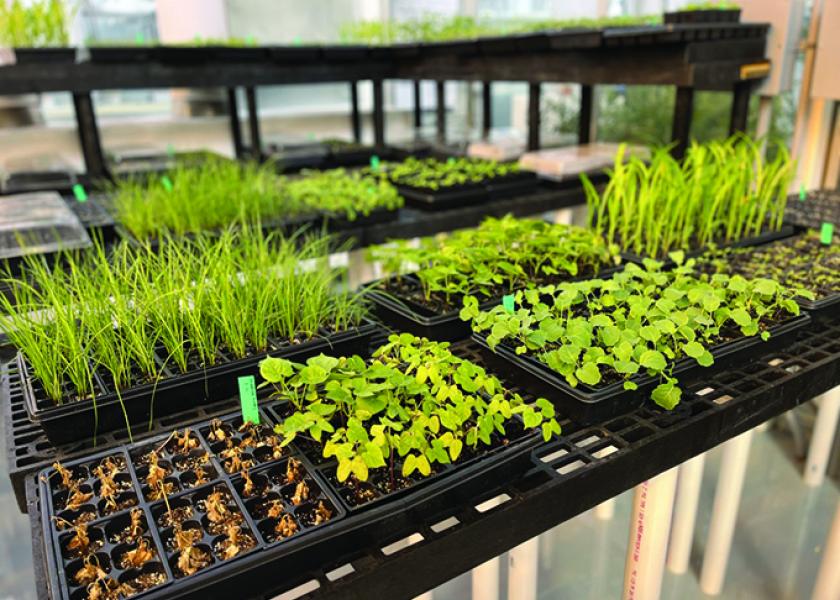Bioherbicide Developed For This Century, With Resistance in Its Crosshairs

The team at Harpe Bioherbicide is working to solve unmet needs in agriculture. Specifically in their bulls-eye is herbicide resistant weeds.
“There’s got to be a way to approach herbicide resistant weeds and be more efficient, less risky and looking future-forward. As such we are working on products developed truly for this century,” says Chad Brommer, co-founder and chief technology officer at Harpe Bioherbicide.
The company’s name alludes to the harpe sword used by Perseus to behead Medusa in Greek mythology—much like its product aims to defeat pigweed.
Brommer says from his career in crop protection he saw all aspects of discovery, development, and marketing. This has driven the Harpe team to be innovative, entrepreneurial in their problem-solving.
In the past five years, Harpe pinpointed the possibilities of using extracts from a series of plants including several in the mentha family. The company is in the in early and mid stage of product development, and this year, they will test a platform of bioherbicides–three organic solo formulations, three different pre-emerge and three burndowns premixed with leading synthetic active ingredients–across 150 field trials across the country.
Chemistry Driven By Nature
“Good herbicide stewardship works well with Harpe because we work well with other herbicides,” says Brommer. “We are disrupting the way the membranes work — making them leaky. Plants lose turgor pressure.”
A non-selective contact herbicide, Harpe targets multiple sites of action including plant cell and organelle membranes. The products have multiple modes of action:
• Loss of cell integrity and water holding capacity.
• Disrupting photosynthesis
• Compromising energy production in the mitochondria
“This is not a product that has been used in the market—we are introducing new modes of action and new sites of action,” Brommer says. “You get one chance to win someone over. We see high efficacy in our products because we knew the bar we had to met would be high.”
Because of their formulation, no special equipment is needed. The products can be used solo or in pre-mixes.
“Our products fit into today’s agricultural systems,” says co-founder and chief operating officer Daniel Pepitone. “It’s chemistry—not a microbial—it comes in jug and you don’t have to keep it alive. Our active compounds live on the 25b registry, so we don’t have to go through FIFRA review with those formulations—just the state use labels. There’s minimum risk to these extracts as they are the same things found in toothpaste and shampoo.”
Pepitone says the company’s portfolio is aiming to be crop agnostic and offer burn down, pre emerge, desiccation, and tailored formulations across different weed control markets.
What’s In The Future?
“Synethetic crop protection won’t go away overnight—it’s a $28 billion market,” Pepitone says. “We aren’t challenging that market but rather we want to work with them and support exisiting tools farmers have by improving their performance.”
Harpe’s team includes industry veterans such as Bill Buckner serving as CEO, and adding Robb Fraley to their advisory board in early 2022.
Harpe is collaborating with more than 12 manufacturers, which they meet with two to three times a year.
Their goal is to divest the company in 2024 and with the potential to have commercial products available as early as 2025. Two more years until a new weapon could be unleashed and hopefully slay heavy weed pressures that cost U.S. farmers $33 billion every year.







